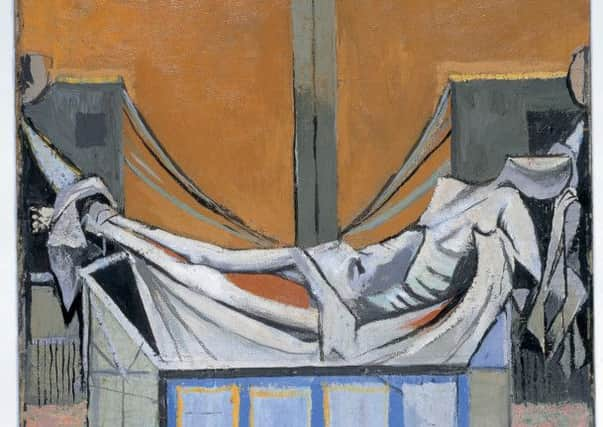Modern religious artworks on display in heritage home


A new exhibition of modern artworks is currently on display at the Brontë Parsonage in Haworth which explores the connection between the family and Methodism, as part of the museum’s ongoing contemporary art programme.
The Brontë family’s strong links with the Methodist faith were founded in Patrick Brontë’s own religious grounding as a young priest – his career was nurtured by John Wesley’s friend Thomas Tighe and – and his wife Maria Branwell’s family were devout Methodists from Cornwall. After Maria’s death her sister Elizabeth came to Haworth to help raise the Brontë children and she had a powerful influence on the lives of her young nephew and nieces.
Advertisement
Hide AdAdvertisement
Hide AdEntitled Artists of Faith, the exhibition has been curated by Nick Cass, a Research Associate in the School of Fine Art, History of Art and Cultural Studies at the University of Leeds who selected the works from the Methodist Church Collection of Modern Christian Art. Cass is currently undertaking a research-based PhD on contemporary artistic responses to the Brontës’ literary heritage and having worked both as an artist and in the education and access departments of a number of museums he is fascinated by the possibilities of heritage sites as modern art spaces.
“I think the reason the Parsonage works so well in that respect is because the Brontës were such interesting people,” he says. “They were interested in social justice and early ideas of feminism and engaged with those issues particularly creatively. So I think to do anything either political or creative in that space is a legacy and a tribute to them and a really interesting way to provoke thought about how we deal with those issues today. What is also interesting about the Parsonage is that the Brontës were very interdisciplinary in their practice – they drew and painted as well as writing. ”
He feels that visitors coming to the museum are affected by the experience of being in the Brontës’ home and describes it as having for many people almost “a sense of pilgrimage.” Exploring the rooms in which the family lived and worked – and, in many cases, died – can have a profound effect, highlighting not only a sense of intense creativity but also mortality and loss. “People are looking for an absorbing experience not necessarily to spend a long time reading,” he says. “And some of the best artworks can express things that words can’t.” The Methodist Church Collection comprises 51 artworks altogether from which Cass selected 11 – they include outstanding work by Graham Sutherland, Mark Cazalet, Elizabeth Frink and Maggie Hambling – to display around the Parsonage. He says that he mostly went by intuition in making his selection.
“The works are not there to illustrate any particular point, so I tried to have a sense of how particular paintings might work in particular places,” he says. “Then I explored what that suggested to me and what broader connections there might be.”